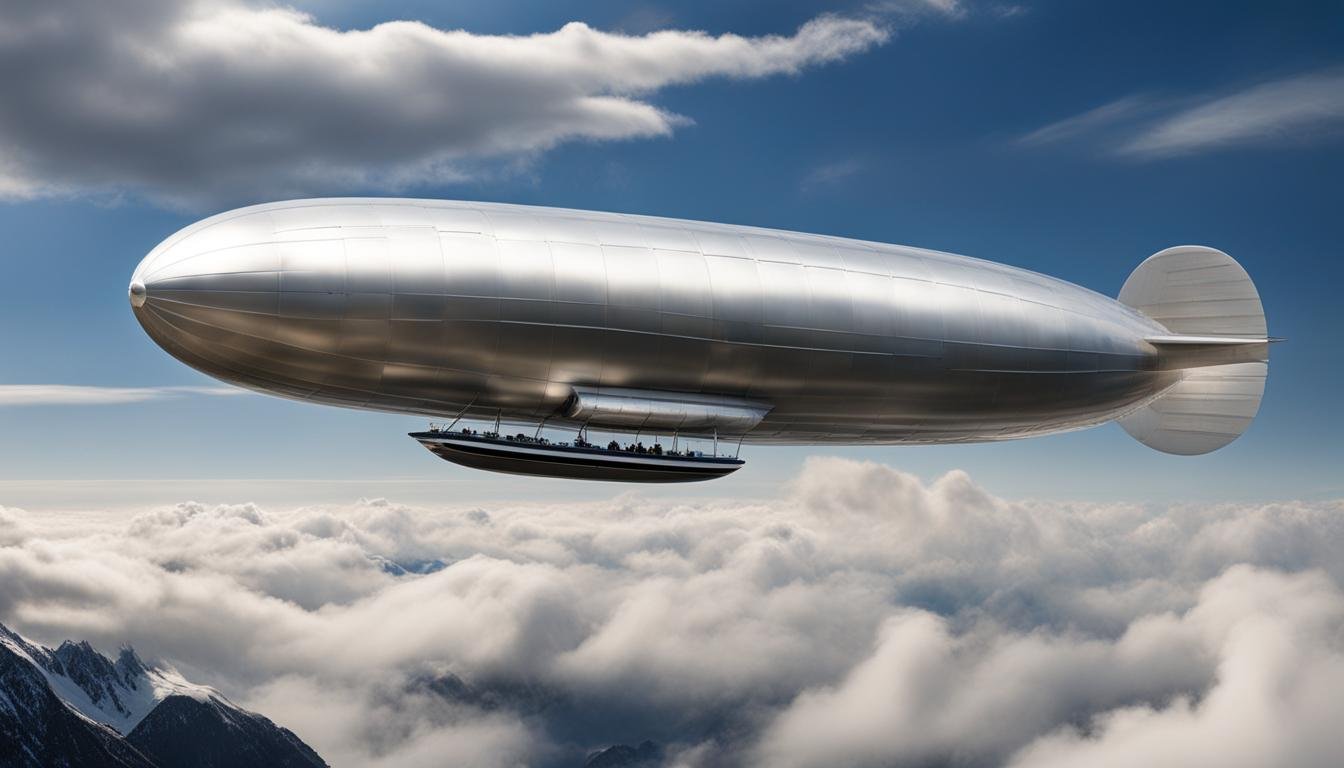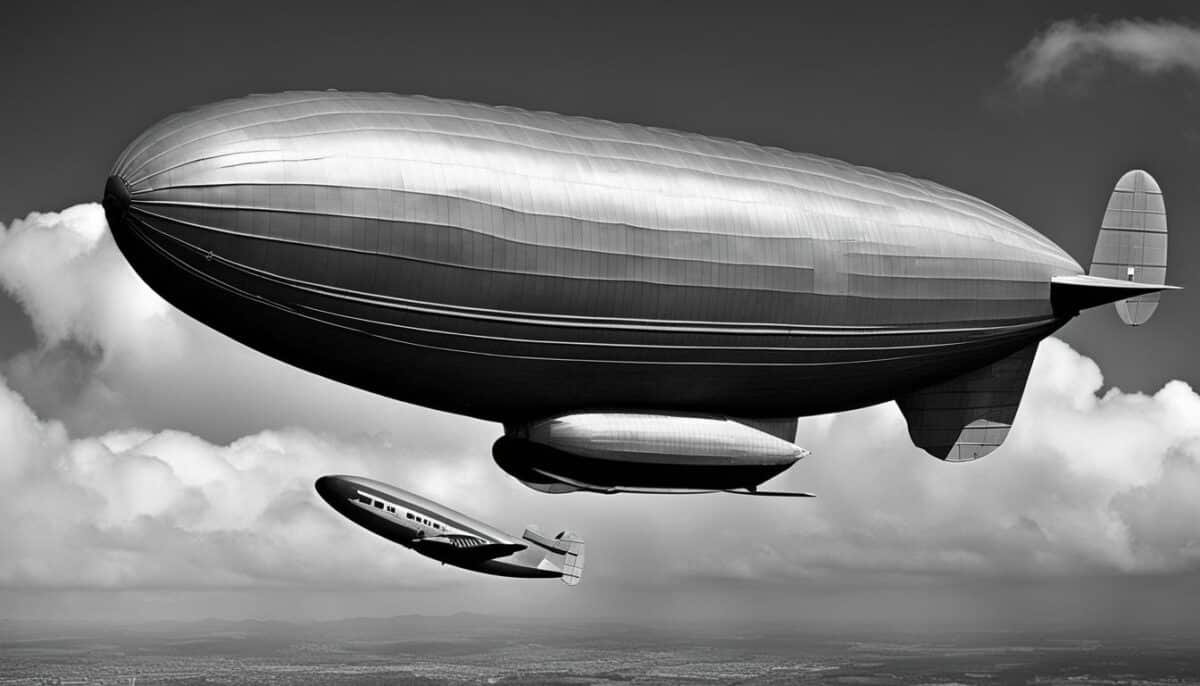In the fascinating realm of aviation, blimps and zeppelins stand out as two iconic types of airships that have captured the imagination of people around the world. While they share similarities in their buoyant flight through the skies, significant differences distinguish them. This article dives into the definitions, origins, and unique characteristics of blimps and zeppelins, shedding light on their distinct roles and features.
Quick Facts Table
| Feature | Blimp | Zeppelin |
|---|---|---|
| Definition | A non-rigid airship without an internal framework | A rigid airship with a structured framework |
| Structure | Lacks an internal skeletal structure | Contains a metal framework covered by fabric |
| Origin of Name | Likely from the sound made when tapped | Named after Count Ferdinand von Zeppelin, a pioneer in rigid airship construction |
| Historical Use | Observation, advertising, and surveillance | Passenger transport, military reconnaissance, and bombing |
| Example | Goodyear Blimp | LZ 129 Hindenburg |

Difference Between Blimp and Zeppelin
Definition of Blimp
A blimp is an airship that lacks a rigid internal structure. The shape of a blimp is maintained by the pressure of the gases within its envelope, which is typically filled with helium or hydrogen. Blimps are known for their use in advertising, surveillance, and as observation platforms due to their maneuverability and steady flight capabilities.
Definition of Zeppelin
A zeppelin is a type of rigid airship named after Count Ferdinand von Zeppelin, an early 20th-century German general and airship innovator. Zeppelins have a distinct structure that includes a metal framework enveloping gas-filled compartments. This design allows for larger sizes and capacities, making zeppelins suitable for long-distance travel, including transatlantic flights.
Origin of Blimp and Zeppelin
- The term blimp is believed to have originated from the British military during World War I, possibly derived from the sound made when one tapped the airship’s surface.
- The name zeppelin comes from Count Ferdinand von Zeppelin, who was instrumental in the development and popularization of rigid airships in the early 1900s.
Pronunciation
- Blimp: /blɪmp/
- Zeppelin: /ˈzɛpəlɪn/
Comparing Blimp and Zeppelin
| Aspect | Blimp | Zeppelin |
|---|---|---|
| Structure | Non-rigid, with no internal frame | Rigid, with an internal metal framework |
| Capacity | Generally smaller, suited for short-range tasks | Larger, capable of carrying more passengers and cargo |
| Usage | Advertising, surveillance, observation | Passenger transport, long-distance travel, military applications |
| Historical Significance | Played roles in wartime reconnaissance and civilian purposes | Known for pioneering long-distance air travel and military use |
Usage in Sentences with Explanations
Use of Blimp in Sentences
- The blimp floated lazily over the stadium, capturing aerial footage of the game.
- Highlights the use of blimps for aerial observation and filming.
- Corporations often use blimps for advertising due to their visibility in the sky.
- Describes the promotional use of blimps.
Use of Zeppelin in Sentences
- The zeppelin was a marvel of its time, offering passengers luxurious accommodations on transatlantic flights.
- Emphasizes the zeppelin’s role in early passenger air travel.
- The zeppelin’s history is marked by both innovation and tragedy, the latter most notably with the Hindenburg disaster.
- References the historical significance and the notable accidents involving zeppelins.
Conclusion
Blimps and zeppelins are both fascinating examples of aviation technology, each with its own unique features and historical contexts. While blimps are characterized by their non-rigid structure and are commonly used for advertising and surveillance, zeppelins boast a rigid framework suitable for passenger transport and long-distance travel. Understanding these distinctions not only enriches one’s appreciation of aviation history but also highlights the innovative spirit of airship design and development.
Commonly Asked Questions
- Are all airships considered blimps or zeppelins?
- No, airships can be categorized as blimps, zeppelins, or non-rigid, semi-rigid, and rigid based on their structural characteristics. Blimps and zeppelins represent specific types within these categories.
- Can blimps and zeppelins still be used today?
- Yes, blimps are still used for advertising, surveillance, and observation, while zeppelins have seen a resurgence for tourism and advertising purposes, albeit on a smaller scale compared to their historical use.
- What makes zeppelins different from other rigid airships?
- Zeppelins are a specific brand of rigid airships developed by Count Zeppelin. While all zeppelins are rigid airships, not all rigid airships are zeppelins. The term has become somewhat synonymous with rigid airships but originally referred to those manufactured by the Zeppelin Company.
- Why are blimps filled with helium instead of hydrogen?
- Helium is preferred over hydrogen due to its non-flammable nature, making blimps safer for use, especially after the Hindenburg disaster highlighted the dangers of hydrogen.

FAQ
What is the difference between a blimp and a zeppelin?
Blimps and zeppelins are both types of lighter-than-air aerial vehicles. However, they have distinct features that set them apart. Blimps are inflatable and rely on helium gas for lift, while zeppelins have a rigid framework and gas compartments for buoyancy.
How are blimps designed?
Blimps have a non-rigid, inflatable structure. They are typically filled with helium gas, which provides lift and enables them to stay airborne. Unlike zeppelins, blimps do not have a rigid framework and maintain their shape due to the pressure of the gas inside.
What are blimps used for?
Blimps are commonly used for advertising purposes. Their large surface area serves as an ideal canvas for promotional messages, making them an eye-catching and unique form of outdoor advertising.
What is a zeppelin?
A zeppelin is a type of rigid airship that features a framework made of metal or other structural materials. It houses gas-filled compartments that provide buoyancy, allowing the zeppelin to fly. Zeppelins were historically utilized for long-distance travel and military operations.
Why were zeppelins famous?
Zeppelins were famous for their impressive size and were often referred to as “skyships.” They were symbols of technological advancement in the early 20th century. The most famous zeppelin, the Hindenburg, unfortunately met its demise in 1937, leading to a decline in zeppelin usage.
What is the historical significance of blimps and zeppelins?
Both blimps and zeppelins have played important roles in aviation history. Blimps are often associated with advertising, while zeppelins represented a marvel of engineering and were once used for long-distance air travel. Their unique designs continue to captivate people’s imagination.

